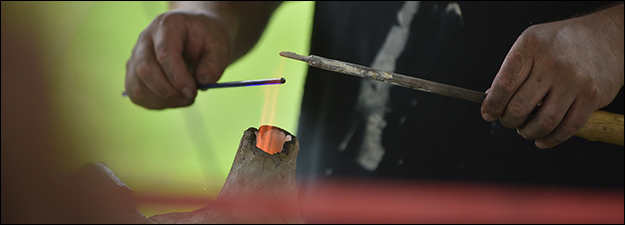Gower's Material World
Sponsoring Organization(s)
John Gower Society
Organizer Name
R. F. Yeager
Organizer Affiliation
Univ. of West Florida
Presider Name
R. F. Yeager
Paper Title 1
Brutus's City on the Thames: Gower's London as Material Context and Imaginative Construct
Presenter 1 Name
Sarah O'Brien
Presenter 1 Affiliation
Fordham Univ.
Paper Title 2
Materializing Gower's Worldly Instructions: Pierpont Morgan MS M.126 and the Science of Literary Education
Presenter 2 Name
Amanda Gerber
Presenter 2 Affiliation
Eastern New Mexico Univ.
Paper Title 3
Gower, Satire, and the Materials of Avarice
Presenter 3 Name
Roger A. Ladd
Presenter 3 Affiliation
Univ. of North Carolina-Pembroke
Start Date
12-5-2016 3:30 PM
Session Location
Bernhard 106
Description
Gower's Material World"
Sebastian Sobecki’s forthcoming Speculum essay establishes that Gower’s Trentham manuscript never left St. Mary Overeys where Gower lived, and it argues for the inclusion of Gower’s hand in the manuscript. This essay will have far-reaching ramifications for Gower studies precisely because it interrogates the material world of Gower’s texts, an approach many recent literary analyses have taken as well. Andrew Galloway’s essay, “Gower’s Kiste,” for example, explores how Gower’s acquisition of a brass pot and chest informs the ‘Tale of the Two Coffers’ in the Confessio Amantis. As Elliot Kendall states in Lordship and Literature: Gower and the Politics of the Great Household, “material culture [is] vital to the social imagination” affecting the production of Gower’s works, and one of the most exciting developments in Gower studies has been these kinds of investigations into the relationship between literary texts, the material culture found represented within those texts, and the material world surrounding the production of those texts. This panel seeks papers from scholars investigating issues such as 1) the role of material culture within his literary works (as Galloway has done, and on issues like the materiality of Nebuchadnezzar’s statue), 2) the material nature of those texts’ production (such as Sobecki’s essay and its inevitable responses), and 3) the material world of Gower studies more broadly conceived (such as investigations of the objects listed in his will: salt-cellars, spoons, chalices, beds, vestments, etc.). Given the recent revelatory work in this area, the panel will provide a timely opportunity for scholars to share current work on Gower’s material world and serve as incentive for others to consider material issues in their own scholarship.
Gower's Material World
Bernhard 106
Gower's Material World"
Sebastian Sobecki’s forthcoming Speculum essay establishes that Gower’s Trentham manuscript never left St. Mary Overeys where Gower lived, and it argues for the inclusion of Gower’s hand in the manuscript. This essay will have far-reaching ramifications for Gower studies precisely because it interrogates the material world of Gower’s texts, an approach many recent literary analyses have taken as well. Andrew Galloway’s essay, “Gower’s Kiste,” for example, explores how Gower’s acquisition of a brass pot and chest informs the ‘Tale of the Two Coffers’ in the Confessio Amantis. As Elliot Kendall states in Lordship and Literature: Gower and the Politics of the Great Household, “material culture [is] vital to the social imagination” affecting the production of Gower’s works, and one of the most exciting developments in Gower studies has been these kinds of investigations into the relationship between literary texts, the material culture found represented within those texts, and the material world surrounding the production of those texts. This panel seeks papers from scholars investigating issues such as 1) the role of material culture within his literary works (as Galloway has done, and on issues like the materiality of Nebuchadnezzar’s statue), 2) the material nature of those texts’ production (such as Sobecki’s essay and its inevitable responses), and 3) the material world of Gower studies more broadly conceived (such as investigations of the objects listed in his will: salt-cellars, spoons, chalices, beds, vestments, etc.). Given the recent revelatory work in this area, the panel will provide a timely opportunity for scholars to share current work on Gower’s material world and serve as incentive for others to consider material issues in their own scholarship.

